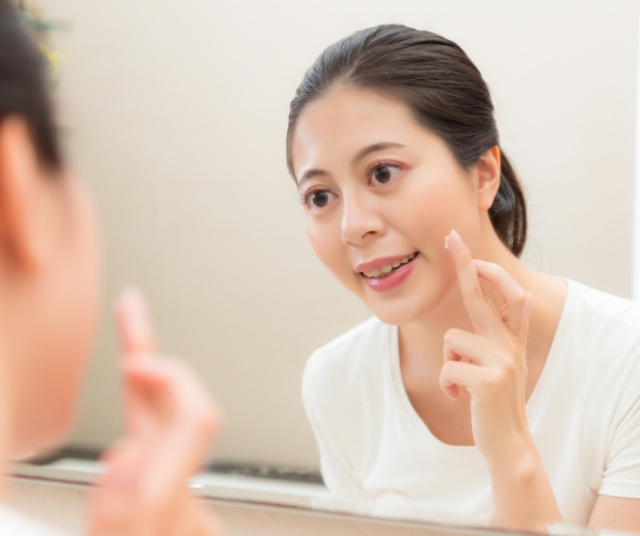The desire to have a slimmer face and neck is a common aspiration in the world of aesthetics and wellness. However, it is crucial to approach this goal with realistic and healthy approaches, avoiding extreme solutions that could put our health at risk. In this extensive article, we will explore effective strategies to safely slim your face and neck by understanding anatomy, incorporating healthy habits, and debunking persistent myths.
Understanding Facial and Neck Anatomy.
Facial Structure and Fat: The Basis of Morphology.
Before we dive into specific strategies, it is essential to understand the anatomy of the face and neck. The facial structure includes muscles, fatty tissue, and the skin that covers everything. Fat is distributed uniquely in each individual, determining the shape and overall appearance of the face.
Liquid Retention: A Temporal Factor.
Fluid retention can temporarily contribute to facial swelling. Excessive sodium intake, lack of hydration, and other factors can affect fluid retention in the face and neck. However, it is important to differentiate between fluid retention and long-term accumulated fat.
Strategies for Healthy Facial Thinning.
Balanced Diet: The Fundamental Role of Nutrition.
A balanced diet plays a crucial role in facial slimming. Opting for nutrient-rich foods, such as fruits, vegetables, lean proteins, and whole grains, can contribute to overall weight loss, which can be reflected in the face and neck. Additionally, reducing your intake of processed and high-sodium foods can help control fluid retention.
Hydration: The Secret Behind Healthy Skin.
Maintaining adequate hydration is essential for skin health and can help reduce temporary swelling. Regular water consumption contributes to the elimination of toxins and can have a positive impact on the overall appearance of the face and neck.
Regular Exercise: Fat Burning and Muscle Tone.
Exercise is a powerful tool for weight loss and muscle toning. Aerobic activities such as running, swimming or cycling can contribute to fat burning, while muscle toning exercises, such as yoga or facial gymnastics, can strengthen the muscles of the face and neck, improving their appearance.
Gradual Weight Loss: Holistic Approach.
If overall weight loss is a goal, taking a gradual and sustainable approach is crucial. Healthy weight loss involves long-term diet and lifestyle changes. Gradual weight loss is also more likely to be maintained in the long term and may be reflected in the reduction of facial fat.
Skin Care: Radiance and Firmness.
Skin care is an essential part of facial slimming. Products containing ingredients such as retinoids and antioxidants can help improve skin texture and provide a firmer appearance. Additionally, protecting your skin from the sun with sunscreen is crucial to preventing premature aging.
Demystifying Persistent Myths.
Miraculous Facial Exercises: The Reality Behind Facial Gymnastics.
Although facial gymnastics has been promoted as a solution for a slimmer face, scientific evidence supporting its effectiveness is limited. Some exercises can strengthen facial muscles, but they do not necessarily contribute significantly to facial slimming. Overall weight loss and muscle tone through regular exercise are more effective approaches.
Risky Surgeries and Procedures: Dangers of the Shortcut.
Invasive procedures, such as facial liposuction, can present significant risks and do not guarantee long-lasting results. Opting for surgeries or procedures without considering the risks and long-term implications can have negative consequences for your health and appearance.
"Slimming" Creams: The Importance of Reality.
The market is saturated with creams and products that promise to slim down specific areas of the body. However, most of these claims lack solid scientific support. Instead of relying on topical solutions, it is crucial to take a holistic approach that includes diet, exercise, and skin care.
The Role of Professional Consultation.
Medical Evaluation: Considering Individual Factors.
Before embarking on significant changes to your facial slimming routine, it is advisable to seek guidance from health professionals. A doctor or dermatologist can evaluate individual factors, such as skin health, bone structure, and overall health, providing personalized and safe recommendations.
Non-Invasive Procedures: Moderate and Safe Options.
For those looking for options beyond natural approaches, there are non-invasive procedures, such as facial radiofrequency and laser treatments, that can help stimulate collagen production and improve skin elasticity. However, it is essential to approach these procedures with caution and under the supervision of trained professionals.
Specific Considerations for Facial Health.
Genetics and Bone Structure: Influencing Factors.
Genetics plays a significant role in face shape and fat distribution. Bone structure also determines facial appearance. It is essential to recognize that some aspects of facial shape are beyond our control and that genetic variability is natural.
Positive Approach: Acceptance and Self-esteem.
It is vital to approach facial thinning from a perspective of acceptance and self-esteem. Beauty and attractiveness are subjective, and the diversity of facial shapes is part of the richness of individuality. Taking a positive approach to our appearance can have a significant impact on our mental and emotional health.
The Path to a Healthy and Balanced Face.
In conclusion, slimming the face and neck in a healthy way involves a holistic approach that combines proper nutritional habits, regular exercise, skin care and a positive outlook towards personal appearance. It is crucial to avoid extreme solutions and approaches that lack scientific support.
Let us remember that health and beauty go hand in hand, and a balanced approach to overall well-being will have a more positive and lasting impact on our facial appearance. By adopting healthy practices and accepting the diversity of facial shapes, we can embrace the unique beauty that each of us possesses.






